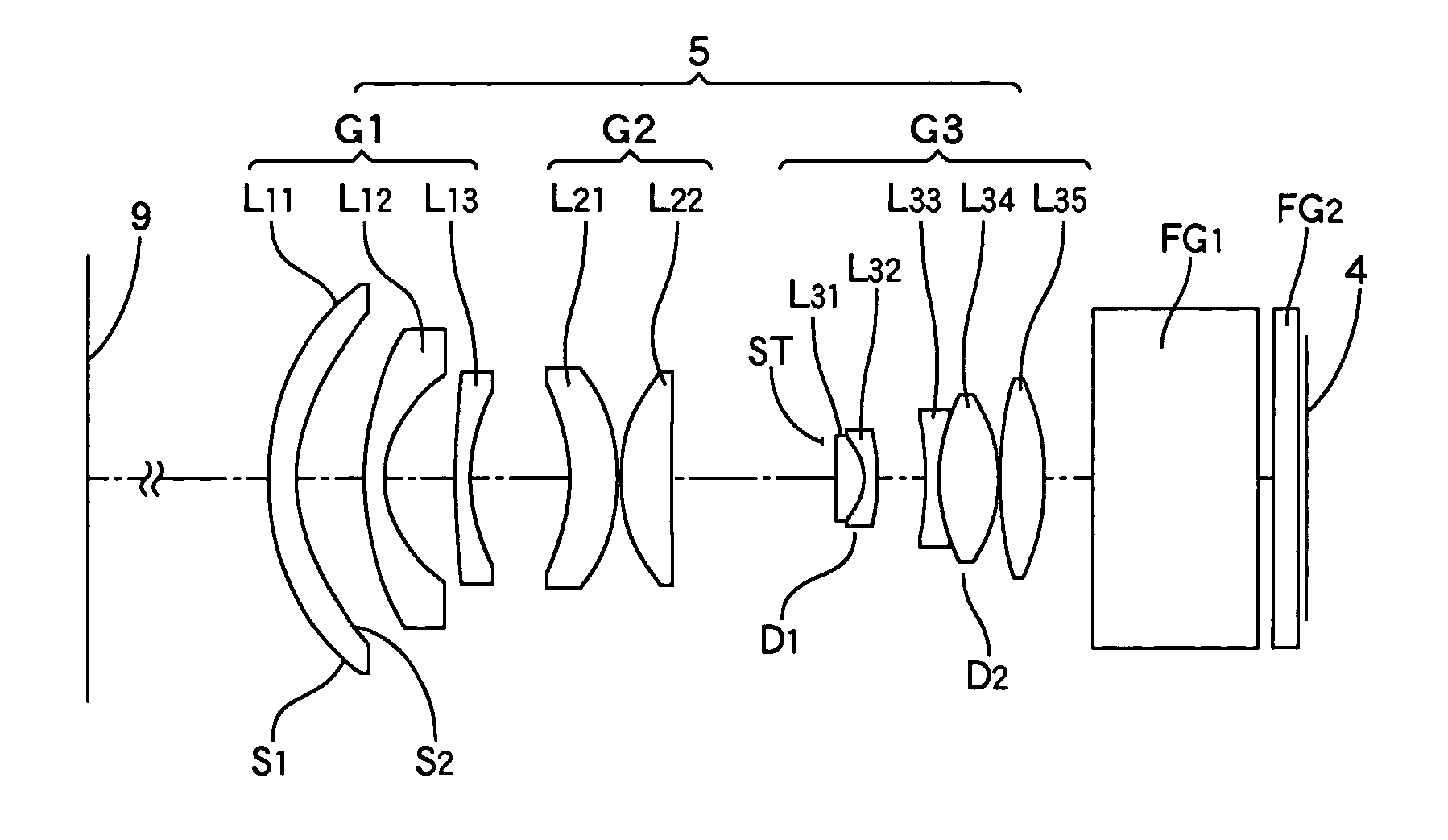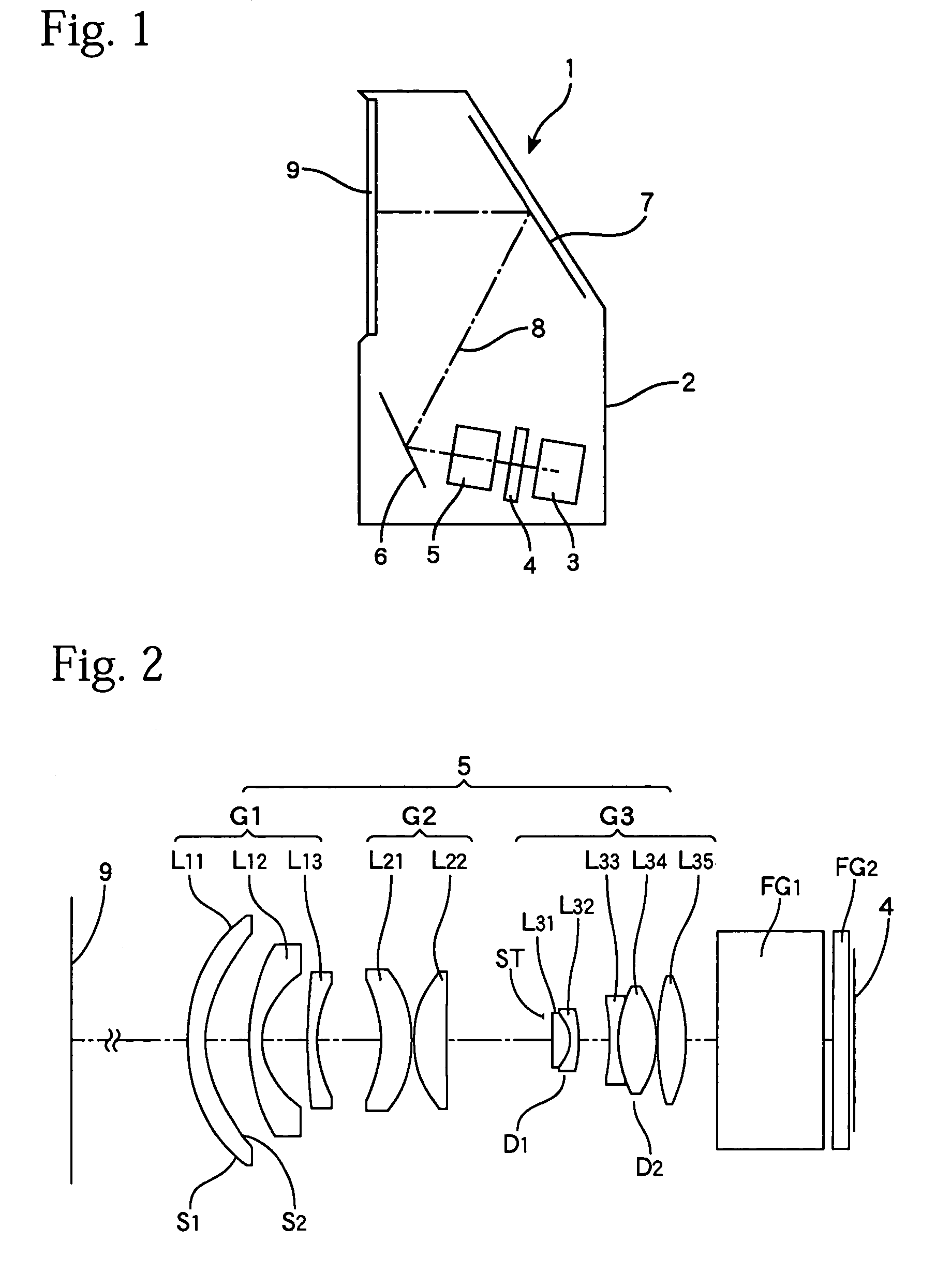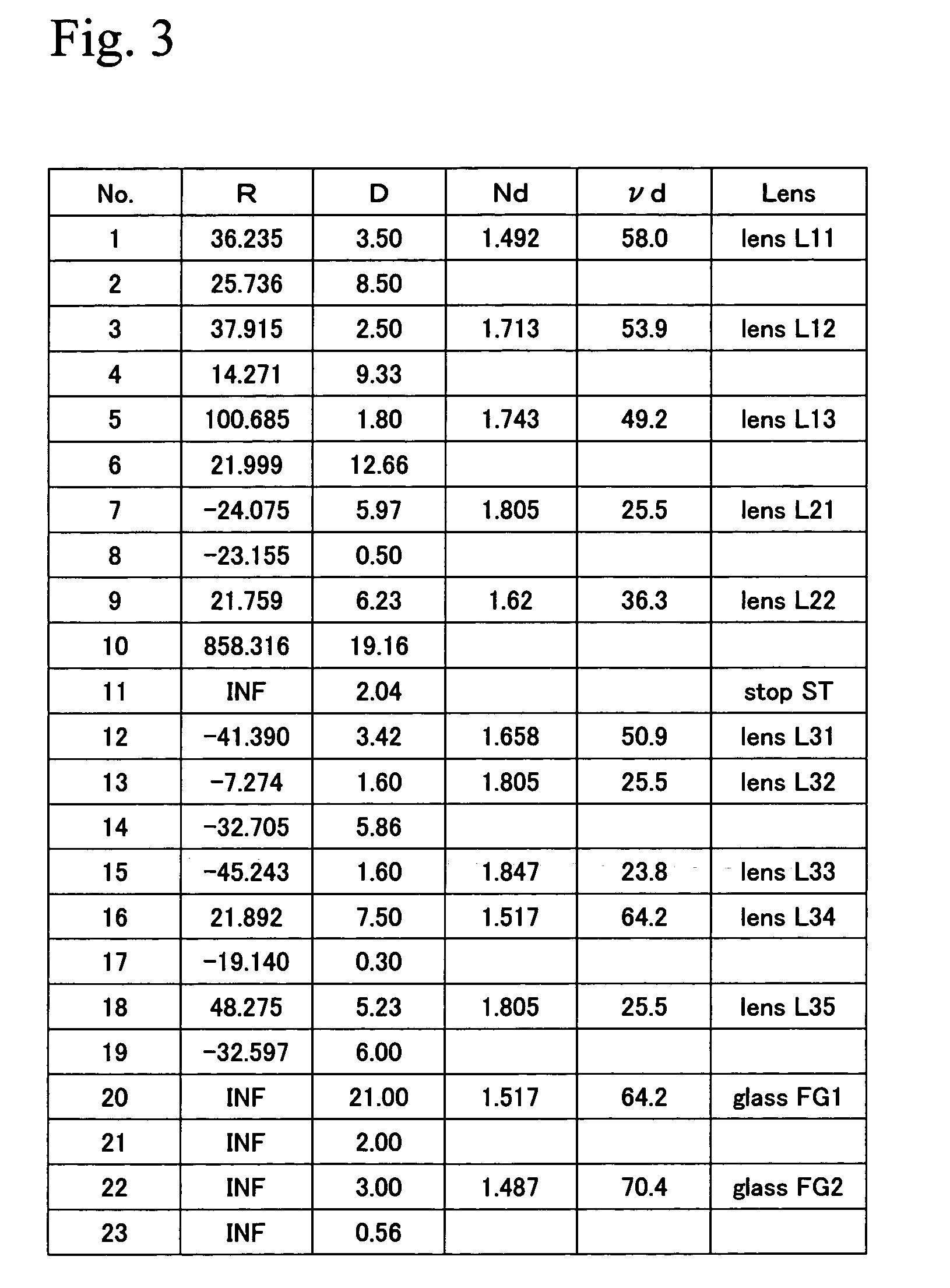Projection lens system and projector
a projection lens and projector technology, applied in the field of projection lens system of projector, can solve the problems of astigmatism, difficult correction of distortion, curvature of field, etc., and achieve the effect of favorable performance and high performan
- Summary
- Abstract
- Description
- Claims
- Application Information
AI Technical Summary
Benefits of technology
Problems solved by technology
Method used
Image
Examples
first embodiment
[0036]FIG. 2 shows an arrangement of lenses in a projection lens system 5 according to the present invention. The projection lens system 5 of the present embodiment is constructed of ten lenses that are split into three lens groups G1, G2, and G3 from a screen 9 side (output side) to a light valve 4 side (input side). Parallel glasses FG1 and FG2 disposed between the projection lens system 5 and the light valve 4 are optical low-pass filters.
[0037]The first lens group G1 that is located closest to the screen 9 has an overall negative refractive power and is comprised of three negative meniscus lenses L11, L12, and L13 in order from the screen 9 side, such lenses being convex on the screen side. Both surfaces S1 and S2 of the first lens L11 are aspherical.
[0038]The second lens group G2 has an overall positive refractive power and is comprised of a positive meniscus lens L21 that is concave on the screen side and a convex lens L22 that is convex on the screen side. Also, the third len...
second embodiment
[0065]FIG. 5 shows an arrangement of lenses in a different projection lens system 5 according to the present invention. The projection lens system 5 of the present embodiment includes a first lens group G1 with a positive refractive power and second and third lens groups G2 and G3 with negative refractive powers that are aligned from the screen 9 side towards the input side, with the third lens group G3 including two cemented lenses D1 and D2.
[0066]To describe the lens construction in more detail, the first lens group G1 positioned closest to the screen side has an overall negative refractive power and in order from the screen 9 side has a three-lens construction comprised of negative meniscus lenses L11 and L12 that are convex on the screen side and a negative biconcave lens L13. In the projection lens system 5 of the present embodiment also, both surfaces S1 and S2 of the first lens L11 are aspherical.
[0067]The second lens group G2 has an overall positive refractive power and is c...
third embodiment
[0090]FIG. 8 shows an arrangement of lenses in yet another projection lens system 5 according to the present invention. The projection lens system 5 of the present embodiment also includes a first lens group G1 with a positive refractive power and second and third lens groups G2 and G3 with a negative refractive power that are aligned from the screen 9 side towards the input side, with the third lens group G3 including two cemented lenses D1 and D2.
[0091]To describe the lens construction in more detail, the first lens group G1 positioned closest to the screen side has an overall negative refractive power and has a three-lens construction comprised in order from the screen 9 side of negative meniscus lenses L11 and L12 that are convex on the screen side and a negative bi-concave lens L13. In the projection lens system 5 of the present embodiment also, both surfaces S1 and S2 of the first lens L11 are aspherical.
[0092]The second lens group G2 has an overall positive refractive power a...
PUM
 Login to View More
Login to View More Abstract
Description
Claims
Application Information
 Login to View More
Login to View More - R&D
- Intellectual Property
- Life Sciences
- Materials
- Tech Scout
- Unparalleled Data Quality
- Higher Quality Content
- 60% Fewer Hallucinations
Browse by: Latest US Patents, China's latest patents, Technical Efficacy Thesaurus, Application Domain, Technology Topic, Popular Technical Reports.
© 2025 PatSnap. All rights reserved.Legal|Privacy policy|Modern Slavery Act Transparency Statement|Sitemap|About US| Contact US: help@patsnap.com



